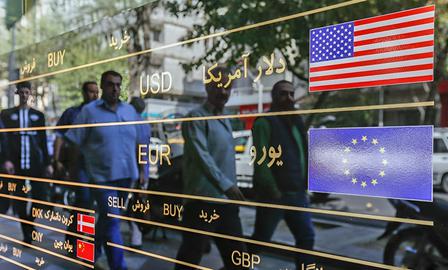An Iranian citizen journalist, who writes under a pseudonym to protect her identity, wrote the following article on the ground inside Iran.
A few days before Implementation Day — when terms of the nuclear deal came into effect, including the lifting of sanctions — some Western media reported that Iran would soon be allowed to export Iranian pistachios, caviar and Persian carpets to the United States.
“Never mind oil, Iran’s about to shake the world pistachio market,” read a Bloomberg News headline in May 2015, long before the nuclear agreement was finalized. “Iran has far more clout in the market for cocktail nibbles than it does in crude [oil] trading. While it ranks only as the world’s seventh-largest oil producer, the Middle Eastern country vies with the US to be the biggest pistachio grower.”
The United States’ National Public Radio (NPR) quoted an American dry goods expert as saying that although the lifting of the sanctions would please US consumers who like Iranian pistachios, caviar and carpets, it could hurt pistachio growers at home.
This does not seem like an exaggeration. According to Asadollah Asgaroladi, the chairman of the Exports Commission of the Iranian Chamber of Commerce, in 2015 — in Iran, the calendar year officially finished on January 21, 2015 — Iran exported around US$1.3 billions’ worth of pistachios. In 2016, it is estimated that Iran will produce 220,000 tons of pistachios, of which around 150 tons will be exported. “Last year we had no problems exporting pistachios,” said Asgaroladi. “Our merchants managed to bypass sanctions easily.”
Currently, the United States is the biggest grower of pistachios in the world, followed by Iran. But when it comes to exports, says Asgaroladi, Iran is the bigger exporter. About 30 percent of American pistachios are consumed by the domestic market, whereas only 10 percent of Iranian pistachios are consumed domestically.
According to sources within the Iranian pistachio market, last year Iran exported 95,000 tons of closed-shell and 62,500 tons of open-shell pistachios, worth $778 and $509 million respectively. The average cost per kilo ranged from $8 to $8.20.
According to US statistics, Californian pistachio growers have doubled their acreage in the past 10 years, despite drought conditions in the state. California began growing pistachios in 1973, and according to the statistics published by the American Administrative Committee for Pistachios, in 2015, the US produced over 513 million, or over 232 thousand tons, more than three times of what was produced in 2004.
But Iranian pistachios are very popular in the American market, and many experts believe that, when compared to US-grown pistachios, they are superior in quality. Iran’s Pistachio Association cites the major importers of Iranian Pistachios in 2012 as Hong Kong and Russia in the Asian region, Egypt in Africa, plus Australia and Canada. In Europe, 18 countries directly import Iranian pistachios and 29 Asian countries have also been faithful customers.
“The US has banned Iranian pistachios intermittently over the last three decades,” the Bloomberg report said. “The first embargo dates from 1979 following the takeover of the US embassy in Tehran and the hostage crisis. The ban was lifted four years later, but re-introduced in 1987 during the Iran-Iraq war, before it was lifted again in 2000. Ten years later, President Barack Obama approved legislation that effectively blocked imports of Iranian pistachios into the US again.”
But what will happen now that sanctions are lifted? With the opening of the lucrative American market, chances are strong that Iran can increase its pistachio exports considerably. This is bound to make California pistachio growers unhappy, but Iranian growers are looking forward to exchanging their pistachios for US greenbacks.
By Marjan Moradi, Citizen Journalist
Related articles:
Iran is an attractive destination for investors
visit the accountability section
In this section of Iran Wire, you can contact the officials and launch your campaign for various problems


































comments